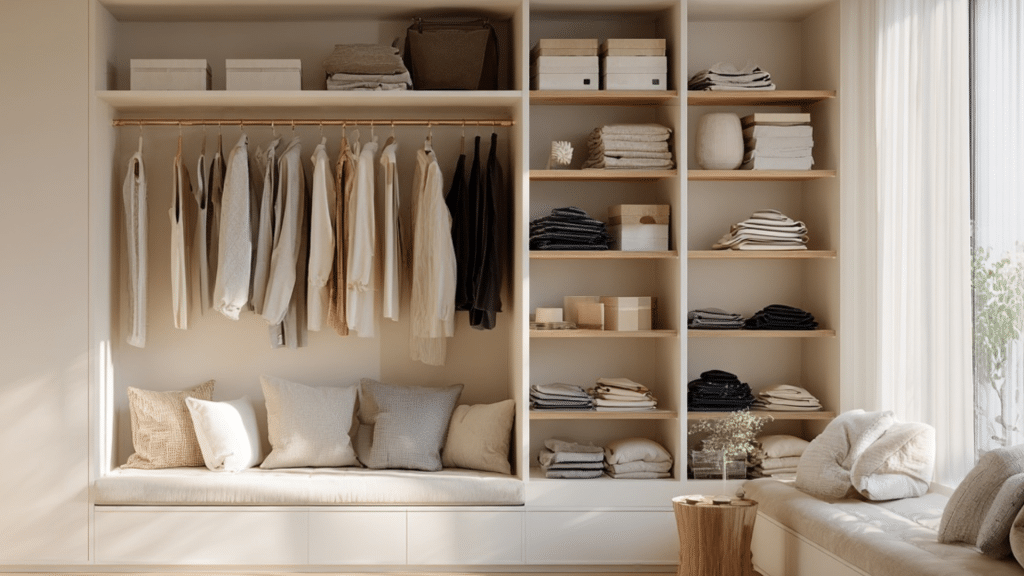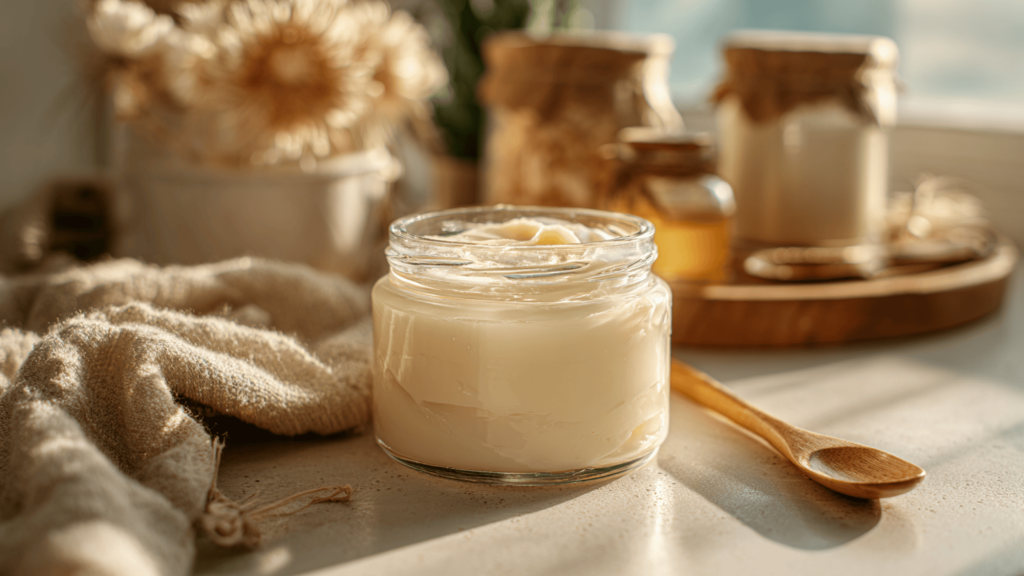Tired of messy closets and expensive organizers? You’re not alone.
Many people struggle to keep their storage spaces neat and tidy, but building your own DIY closet shelves is a simple and affordable way to fix that.
With just a few basic tools and a bit of time, you can create sturdy shelves that fit your space perfectly and make everything easier to find.
It’s a fun weekend project that doesn’t require special skills or fancy equipment.
In case you have a small or large closet, adding custom shelves can upgrade the space and help you enjoy a cleaner, more organized home.
Why Choose DIY Closet Shelves
Building your own closet organizer offers many benefits compared to buying one or hiring a professional.
It saves money since you only need basic materials like wood, screws, and paint, making it much cheaper than store-bought systems.
You can also design it to fit your exact space, choosing the height, depth, and spacing that work best for your needs.
No special skills are required, just simple tools like a saw, drill, and level. Even beginners can build sturdy shelves with a little time and care.
Plus, there’s real satisfaction in creating something useful yourself and enjoying a neat, organized space that you built with your own hands.
Tools & Materials You’ll Need
Gather everything before starting. Having your tools and materials ready makes building faster, easier, and more organized.
| Materials | Tools |
|---|---|
| Seven 8-ft 1×12 boards (pine or MDF) | Tape or laser measurer |
| 1×3 support boards for cleats | Circular saw or miter saw |
| 2-inch wood screws | Power drill with bits |
| Finishing or brad nails | Level (4-foot recommended) |
| Wood filler | Square |
| Caulk | Stud finder |
| Paint or stain | Safety glasses |
| Sandpaper (120-grit and 220-grit) | Work gloves |
| Optional: closet rods, hooks, baskets | Dust mask |
Budget Overview: The entire project costs about $80–$120, offering big savings compared to pre-made organizers while creating a custom, durable storage solution.
How to Build Closet Shelves
Create strong, custom shelves using simple tools and easy steps to organize your space and give your closet a clean look.
Step 1: Measure Your Closet
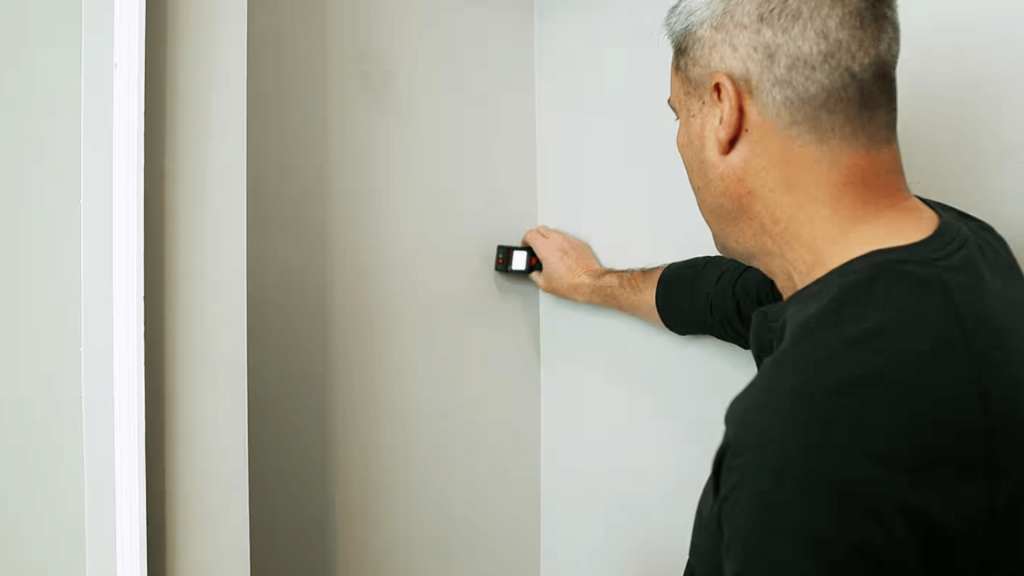
Measure the height, width, and depth of your closet carefully. Use a tape measure for accurate results and mark wall studs using a stud finder.
Plan shelf heights according to what you’ll store. Taller sections are great for clothes, while smaller spaces work best for shoes and accessories.
Step 2: Cut the Wood
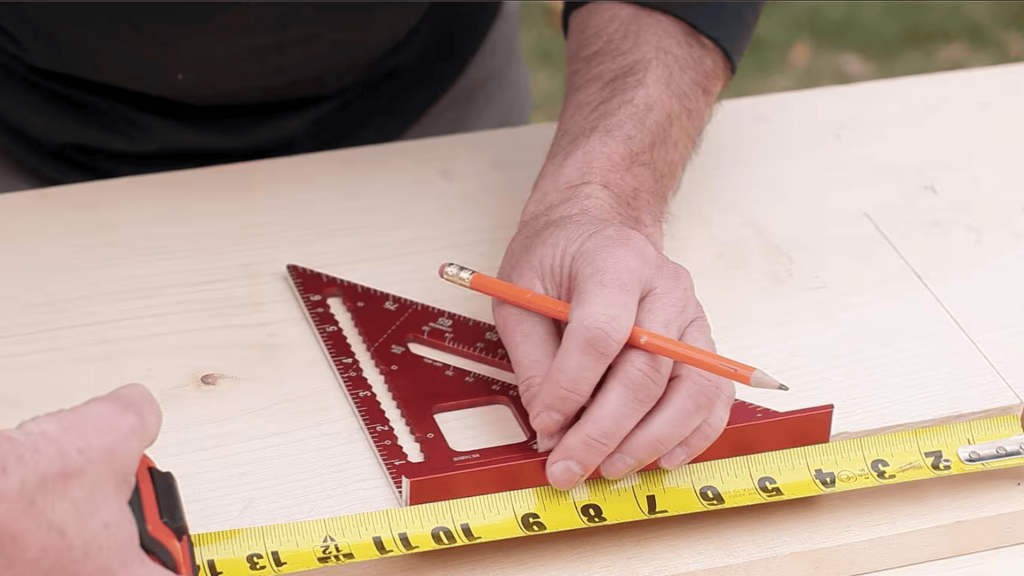
Write down every piece you need, including panels and supports. Cut each section using a circular or miter saw for clean edges.
If unsure, most hardware stores offer cutting help. Sand all pieces with fine-grit paper to remove rough edges and prepare them for assembly and painting.
Step 3: Assemble the Center Unit
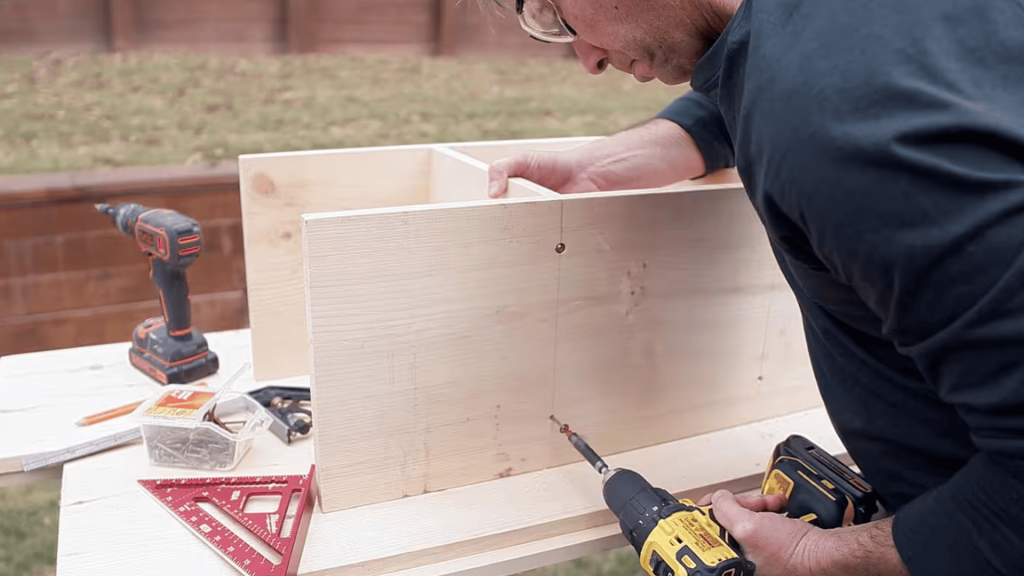
Lay the side panels flat and mark where each shelf will go. Pre-drill small holes to prevent the wood from splitting.
Secure shelves with screws, keeping them even and straight. You can paint or stain the pieces before installation for a smooth finish that looks clean and polished.
Step 4: Install the Side Panels
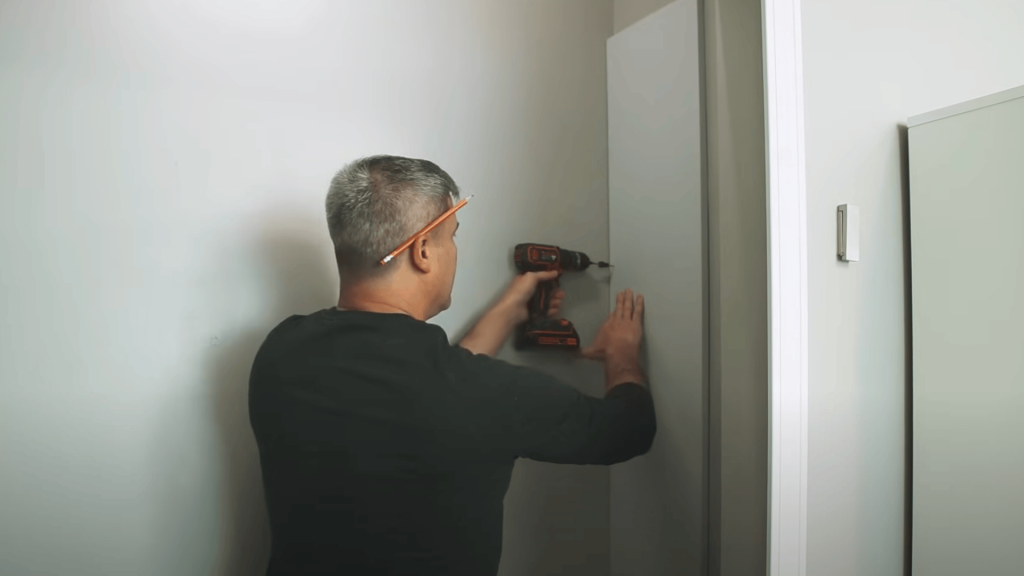
Place side panels upright against the walls and check alignment with a level. Secure them into studs using long screws for strong support.
Tighten screws evenly to avoid gaps or tilts. Take your time to ensure the panels are straight before attaching other pieces of the structure.
Step 5: Add Shelves and Supports
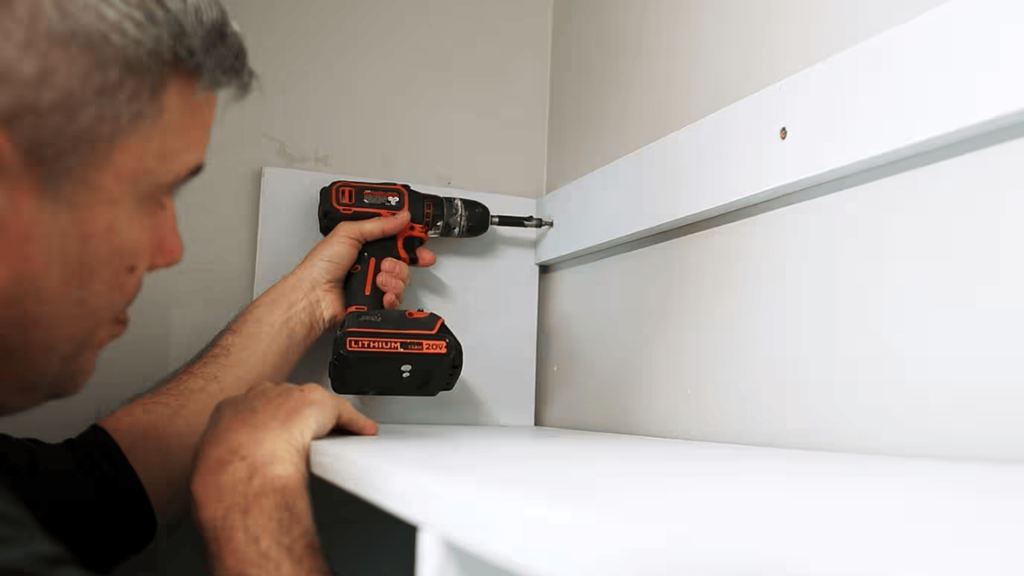
Attach wooden cleats to the wall and side panels where each shelf will sit. Rest the shelves on top and fasten them securely.
Position the center unit between the panels for added strength and balance. Make sure every piece is level and firmly in place before finishing.
Step 6: Customize and Finish
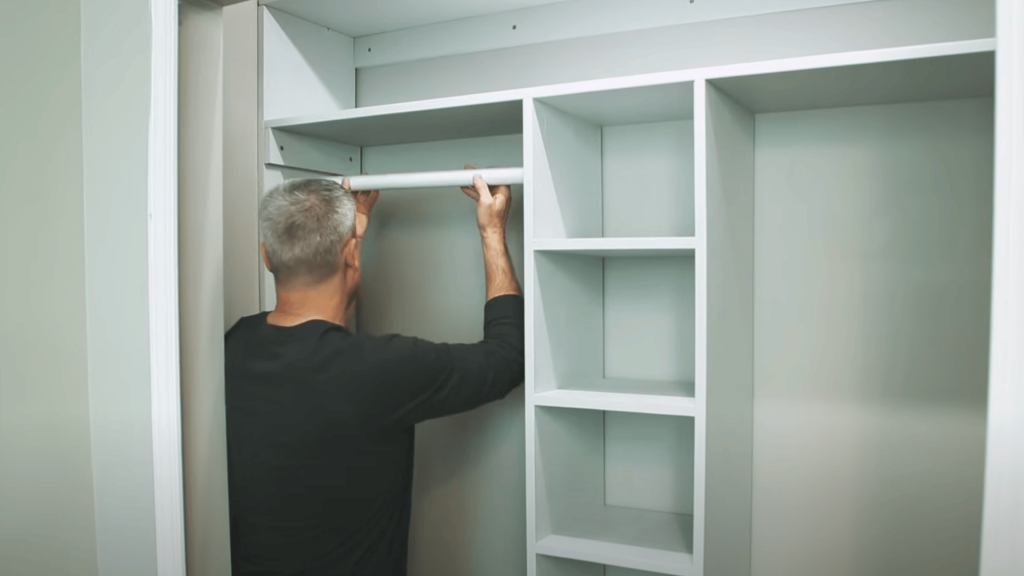
Add closet rods for hanging clothes and install hooks or baskets for extra storage. Fill screw holes with wood filler, sand smooth, and touch up with paint.
Caulk around the edges for a built-in appearance. Once dry, clean up the area and organize your belongings neatly.
For a more detailed visual walkthrough, you can watch The Home Depot’sstep-by-step video on building DIY closet shelves for extra guidance.
Closet Shelves DIY Tips for Success
Follow these simple tips to make your DIY closet shelves sturdy, level, and professional-looking from start to finish.
- Always find the studs: Secure supports directly into wall studs for strength and safety. Avoid attaching heavy shelves only to drywall.
- Use a level at every step: Check alignment often to keep shelves straight. Uneven shelves look messy and can cause items to slide.
- Add mid-supports for long shelves: For shelves over 36 inches, add a center cleat or bracket to prevent sagging, especially with heavy storage.
- Label your cuts: Mark each piece as you cut to stay organized and prevent mistakes during assembly.
- Paint before installing: Apply paint or stain before assembly for smooth edges and a clean, professional finish.
These simple tips help your closet shelves last longer, look cleaner, and perform better for everyday use.
Top 4 Closet Shelf Design Ideas
Upgrade your storage space with these creative and practical designs. Each option enhances your closet’s look, improves functionality, and helps you make the most of every inch, without adding unnecessary cost or complexity.
1. Floating Closet Shelves
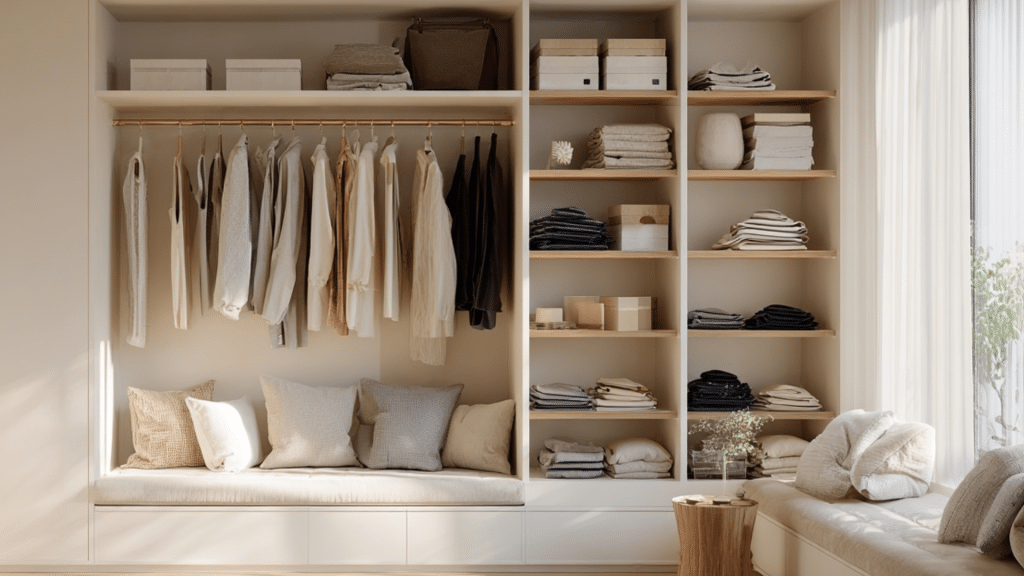
Give your closet a modern, minimalist touch with floating shelves.
Hidden brackets or French cleats support the shelves securely while staying out of sight, creating a clean, open design that makes your space feel larger and more elegant.
2. Modular Cube Shelves
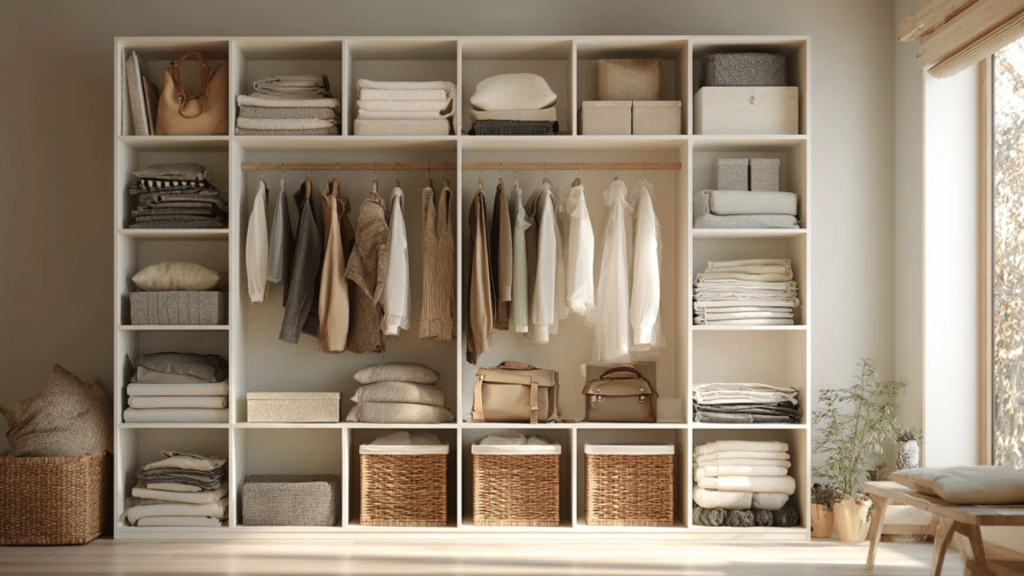
Build cube-shaped units in different sizes and arrange them however you like.
These movable cubes make it easy to customize your storage layout, offering flexibility for clothes, accessories, or decor that can change as your needs evolve.
3. Slanted Shoe Racks
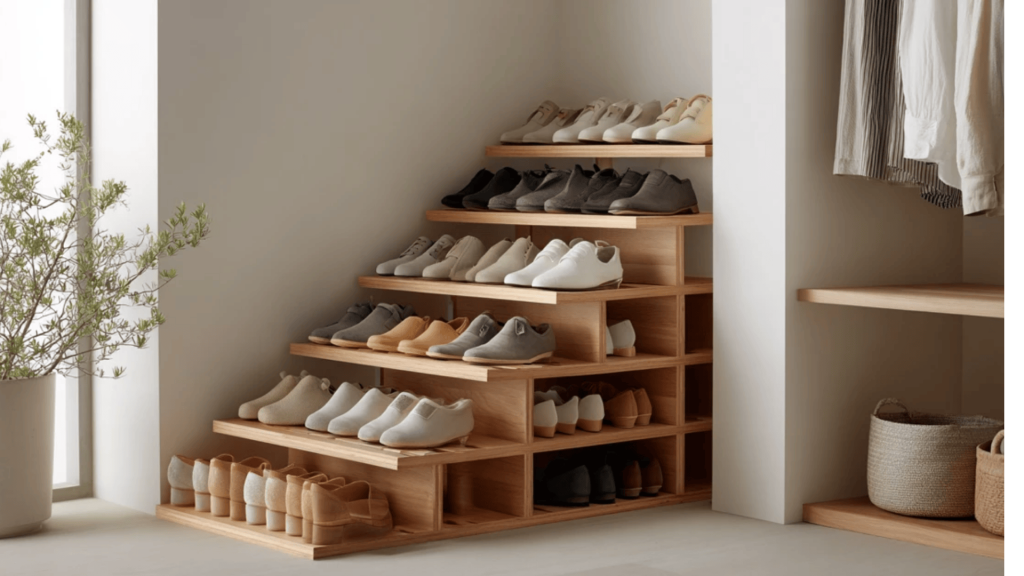
Tilted shoe racks keep your footwear visible and organized while saving space.
The angled supports hold shoes securely in place and make every pair easy to reach, helping your closet stay neat, stylish, and clutter-free.
4. Corner or L-Shaped Units
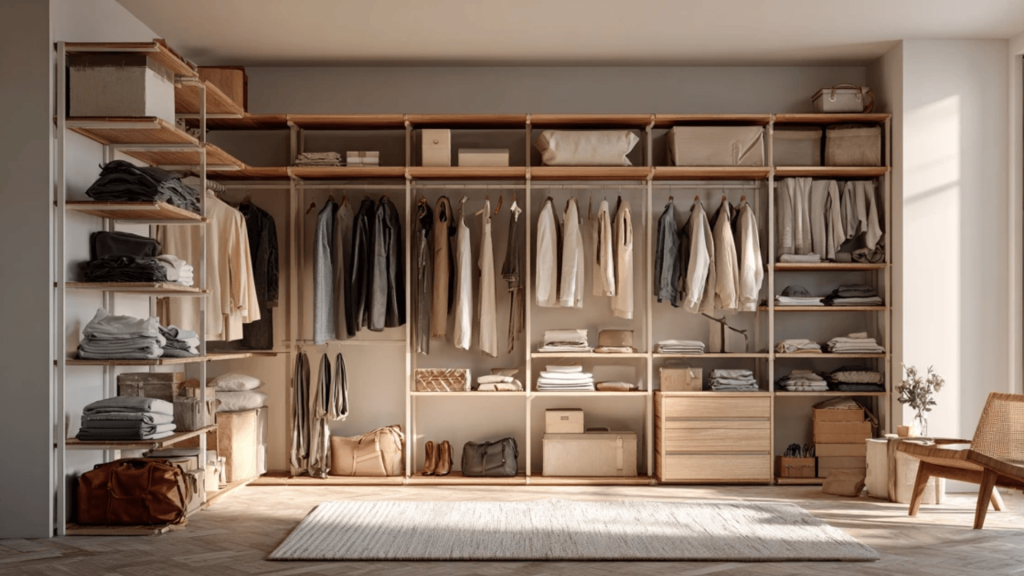
Maximize corner areas with shelving that wraps around walls. This design adds a built-in look and uses otherwise wasted space effectively, creating a seamless, high-end feel perfect for walk-in closets or larger rooms.
Budget Overview: These four design ideas combine creativity and practicality, letting you build a beautiful, customized closet that fits your budget and your style.
Common Mistakes to Avoid
Avoid these common errors to ensure your DIY closet shelves are strong, level, and built to last.
A few careful checks can make the difference between a sturdy, professional-looking project and one that needs redoing later.
- Not securing into studs: Always anchor supports directly into wall studs. Drywall anchors alone can’t handle heavy loads and may pull out over time.
- Overloading wide shelves: Shelves wider than 36 inches can sag under pressure. Add a center support or limit how much weight you place on them.
- Forgetting about baseboards: Baseboards can interfere with panel placement. Notch your side panels or remove a small section of baseboard for a flush fit.
- Uneven shelf spacing: Avoid guessing shelf heights. Measure and mark carefully, then use a level to ensure even spacing across all tiers.
- Poor leveling: Even slight slopes are noticeable once the shelves are filled. Check for level after every step and adjust before tightening screws.
Double-check each measurement and keep your level handy; precision ensures your closet looks clean, balanced, and professional.
Final Touches & Inspiration
Small details can completely elevate your DIY closet shelves from practical to beautiful.
Add matching baskets or bins to keep everything neat, and switch to uniform hangers for a clean, cohesive look.
A fresh coat of paint or a touch of wallpaper brings warmth and character, while soft LED strip lights create a calm, inviting glow.
Capture before-and-after photos to celebrate your transformation and maybe even inspire someone else to start their own project.
Take a step back, admire your work, and enjoy the satisfaction of turning a simple idea into a stylish, functional space that’s entirely your own.
Frequently Asked Questions
What’s the Best Wood for Closet Shelves?
Plywood and pine are great choices for strength and affordability. MDF is budget-friendly, while cedar adds a pleasant scent and natural moth resistance.
How Thick Should Closet Shelves Be?
Use ¾-inch boards for clothing storage. For heavier items like bins or books, choose a 1-inch thickness or add extra brackets for stronger support.
Can I Paint Melamine or Plywood Shelves?
Yes. Lightly sand the surface and use primer before painting. For melamine, apply a bonding primer designed for glossy finishes to improve adhesion.
How Deep Should Closet Shelves Be?
Closet shelves typically range from 12 to 16 inches deep. Shallower shelves suit shoes, while deeper ones easily accommodate folded clothes or linens.

